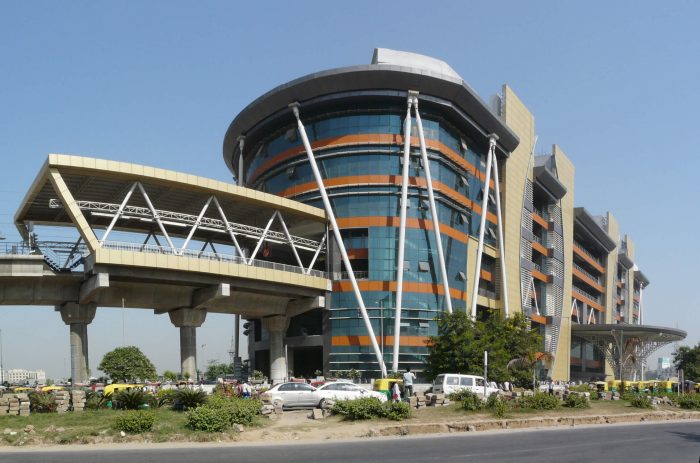History of Gurgaon
Gurgaon is located 30 Km south of New Delhi, about 10 Kilometers from Dwarka sub-city. Its borders Rajasthan, Uttar Pradesh, and Delhi. It has excellent connectivity with other states via Delhi- Jaipur-Ahmedabad broad gauge rail link and NH 8 & New Delhi Metro.
Over the past 40 years, the city has undergone rapid development and construction. Gurgaon is part of The National Capital region & it is a satellite town of Delhi. The District is the second-largest city in the Indian state of Haryana and is the industrial and financial center of Haryana.
The modern history of Gurgaon started in 1861, the district, which it was a part of was rearranged into five tehsils: Gurgaon, Ferozepur Jhirka, Nuh, Palwal, and Rewari (10) and the modern-day city came under the control of Gurgaon tehsil. in 1947, Gurgaon became a part of independent India and fell under the Indian state of Punjab. In 1966, the city came under the administration of Haryana with the creation of the new state. In 1979, the state of Haryana, further split up the Gurgaon district into two districts namely – Gurgaon and Faridabad with effect from 15th August 1979.
The recent history of the development of the present-day Gurgaon city can be traced with the collaboration of Suzuki Motors of Japan and Maruti Udyog Limited in the early eighties. After that, a new area of rapid industrialization of Gurgaon started. In 1991, when the Narasimha Rao government introduced market economic reforms, demand for housing steadily increased, followed by a demand for commercial space & Gurgaon emerged hub for IT & MNC companies.
On 27 September 2016, the Haryana government officially announced that the city and district would henceforth be known as Gurugram.
Culture & Heritage - History of District Gurgaon / Gurugram
The Gurgaon District has been in existence since the times of Mahabharta. It is said that Yudhishter, the eldest brother among the Pandavas, gave the village to his guru, Dronacharya, whose tank still exists on the west side of the Railway Road. The name “GURGAON” also derived from the Village of Guru (teacher) & the actual village is about 1.5 Km. away from Gurugram town, where the temple of SHEETLA MATA is located.
Gurgaon was historically inhabited by the Hindu people, and in early times it formed a part of an extensive kingdom ruled over be Ahir clan. During Akbar’s reign, Guruggaon fell within the governing regions of Delhi and Agra. As the Mughal empire started to decline, the place was torn between late Mughals & Marathas. By 1803 most of it came under British rule through the treaty of Surji Arjungaon with Gwalior State. It becomes a part of the district, which was divided into units called Parganas. These units were given to petty chiefs for the military service rendered by them.
Eventually, these units came under the direct control of the British & after the revolt of 1857, it was transferred from the North-Western provinces to Punjab province. In 1861, the district, which Gurugram was a part of was rearranged into five tehsils: Gurgaon, Ferozepur Jhirka, Nuh, Palwal, and Rewari (10) and the modern-day city came under the control of Gurgaon tehsil. in 1947, Gurgaon became a part of independent India and fell under the Indian state of Punjab. In 1966, the city came under the administration of Haryana with the creation of the new state.
Sources: https://gurugram.gov.in/
Gurgaon - The Modern City
As per provisional reports of Census of India, the population of Gurgaon in 2011 was 9,77,337. Gurgaon/ Gurugram City is located in the Gurgram district of Haryana state & its part of NCR. The city is a part of the Gurgaon (Vidhan Sabha) constituency and Gurgaon (Lok Sabha) constituency. Rao Inderjit Singh is the Lok Sabha MP of Gurgaon, while Sudhir Singhla is the present MLA of Gurgaon.
It has the 3rd highest per capita income in India after Chandigarh and Mumbai. Gurgaon witnessed a phenomenal growth in industry and urbanization. Its hub of multinational companies, large industries, BPO, IT/ITES companies & shopping malls. It has the automobile industry, telecommunication equipment, electrical goods, sports goods, rubber products readymade garments, and IT/ITES companies. Other industries include light engineering goods, pharmaceuticals, agro-based and food processing, leather, terry towels, air conditioners, shoes, pesticides, insecticides, etc.
Know more about Haryana



Pingback:Police Stations in Gurgaon | Gurugram Police General Information